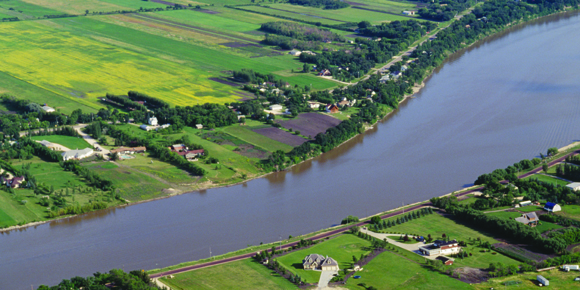In 2002, WinnipegREALTORS® made a presentation to what was then called a regional planning advisory committee on Manitoba’s capital region. It was a productive exercise because it educated the industry association about how much the rural municipalities surrounding Winnipeg were contributing to sales activity. It was becoming a growing segment of the housing market, which has become even more pronounced since then.
The market region represented by the association covers the entire capital region and beyond. We are similar to the Greater Vancouver Real Estate Board or the Toronto Real Estate Board which both cover a broader geographical area than the city itself.
It was pointed out in the 2002 capital region presentation paper that MLS® residential-detached sales from 1991 to 2001 went up 44 per cent in the outlying rural municipalities, while the city of Winnipeg only experienced an 11 per cent rise in activity. Another statistic showed rural municipalities had a 14.6 per cent market share in 2001 and were just 17 per cent of the city sales.
Fast forward to 2016 and the pattern detected then has emerged in more dramatic fashion. For 2016, the capital region rural municipalities represented 25.7 per cent of total residential-detached sales. Their 2,560 sales made up 34.6 per cent of the 7,387 in Winnipeg sales.
Winnipeg residential-detached sales in 2001 were 7,040, or less than five per cent from what they totaled in 2016. In comparison, the rural municipalities have more than doubled their sales activity in 15 years and have risen from 1,208 in 2001 to 2,560 in 2016.
In fairness to the city, since this trend really took hold in 2002, condominium sales activity has increased over 100 per cent, from 864 sales in 2002 to 1,745 in 2016, and Winnipeg’s market share is 89 per cent of total condominium sales.
Nevertheless, when you have an issue come to the forefront as it did in 2016, with respect to impact fees on new housing in Winnipeg, it is hard to ignore the fact that rural municipalities are a viable alternative to many Manitobans considering where they want to buy a single-family home.
Recently, Statistics Canada released population data from its 2016 Census that confirmed what many had suspected — a faster pace of growth in rural municipalities versus Winnipeg. While Winnipeg’s population growth rate from 2011 to 2016 was quite respectable and higher than the national average at 6.6 per cent, it was nowhere near as strong as some of the rural municipalities. Steinbach’s population has increased 17 per cent, Niverville 26.6 per cent, Ste. Anne 30 per cent, Blumenort 19.3 per cent and Ille des Chenes 25.1 per cent.
In particular, Steinbach figures prominently in generating MLS® sales for the entire market region. Last year, there were 460 residential-detached sales and both 2011 and 2012 eclipsed 500 sales.
It’s important to be aware of how significant the growth of the outlying rural municipalities is to our province overall and ensure this growth does not occur in isolation from the city — co-ordination between rural and city is critical.
On a positive note, things have occurred to make co-operation more of a reality. In 2006, the province of Manitoba enacted The Capital Region Partnership Act. Its purpose is to facilitate an organization known as the Capital Region Partnership with a mandate to discuss and develop regional solutions to common issues facing the 18 municipal governments within the region. Some of the more obvious issues relating to the capital region are land-use planning, transportation and infrastructure, water quality and supply and economic development.
In place is the Partnership of the Manitoba Capital Region (PMCR), with a board of directors representing reeves and mayors and Winnipeg Councillor Janice Lukes, who are now working closely together to obtain results. One of the more recent byproducts of their efforts was a Manitoba Capital Region Transportation Master Plan in March 2014, while another was the Regional Growth Strategy in November 2016 entitled, Securing Our Future.
The members of the board will also ensure that indigenous people within the region are kept informed about the PMCR’s actions and plans.
Today’s emphasis is on how we manage growth so that there is a more efficient allocation of resources and a better alignment of regional goals to avoid duplication of services to ultimately obtain a higher quality of life for Manitobans.



